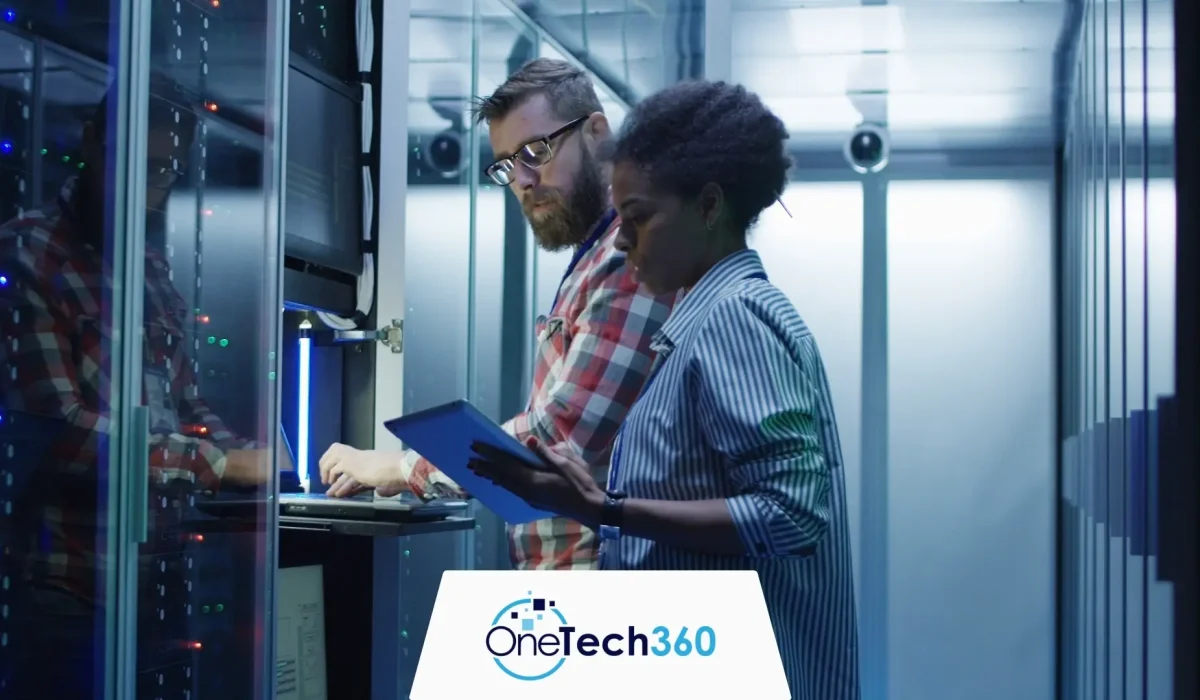What is IT procurement? It’s the outsourced process of acquiring the right technology to help support your business and workflows. What does this mean to your bottom line? That means stable networks, so you avoid costly downtime, avoiding devastating cyber attacks, and you have one less thing to manage.
| “Effective IT procurement is not just about buying technology; it’s about making strategic investments that drive growth and innovation,” notes Luis A. Laponte Jr., Principal CEO of OneTech360. |
After all, businesses increasingly rely on advanced technologies to drive growth, enhance productivity, and maintain competitive advantage.
Leveraging these technologies is central to IT procurement. In this comprehensive guide, we’ll explore the essentials of IT procurement and outline the crucial steps involved in the process.
What is IT Procurement?
IT procurement is the process of identifying, acquiring, and managing the technology assets and services that an organization needs to achieve its business objectives. This includes everything from hardware and software to cloud services and IT infrastructure.
The goal of IT procurement is to ensure that the right technologies are acquired at the best possible price, delivered on time, and capable of meeting the organization’s needs both now and in the future.
The Importance of IT Procurement
Understanding what IT procurement is, is only the beginning. The real question is why it is necessary. Here are several reasons why IT procurement is crucial for modern businesses:
Cost Efficiency
Effective IT procurement helps organizations save money by identifying cost-effective solutions, negotiating better deals with vendors, and avoiding unnecessary expenses. It ensures that every dollar spent on technology contributes to the organization’s strategic goals.
Risk Management
By carefully selecting reliable vendors and robust technologies, IT procurement minimizes the risk of downtime, security breaches, and other disruptions. This proactive approach to risk management helps protect the organization’s reputation and financial stability.
Scalability and Flexibility
A well-planned IT procurement process ensures that the technology infrastructure can scale with the business. This flexibility is essential for supporting growth and adapting to changing market conditions.
Maximize the Efficiency of Your IT Stack With Improved Hardware and Software
Work with a leading IT partner to help you access the tech you need.
Compliance and Standardization
Adhering to industry standards and regulatory requirements is a critical aspect of IT procurement. This not only helps avoid legal issues but also ensures a consistent and secure IT environment across the organization.
Innovation and Competitiveness
By staying ahead of technological trends and adopting cutting-edge solutions, businesses can maintain a competitive edge. IT procurement enables organizations to invest in innovative technologies that drive growth and enhance operational efficiency.
What is the IT Procurement Process?
The IT procurement process involves several key steps that ensure the organization acquires the right technology solutions in a cost-effective and timely manner. Here’s a detailed look at each step:
1. Needs Assessment
The first step in the IT procurement process is to assess the organization’s technology needs.
This involves identifying the specific requirements for hardware, software, and services and understanding how these needs align with the organization’s strategic goals. A thorough needs assessment helps prevent over- or under-purchasing and ensures that the procured technology will effectively support business operations.
2. Market Research
Once the needs are identified, the next step is to research the market for potential solutions. This involves evaluating different vendors, comparing products and services, and assessing the overall market landscape.
Market research helps identify the best options and provides valuable insights into pricing, quality, and vendor reputation.
3. Request for Proposal (RFP)
After narrowing down the potential solutions, the organization typically issues a Request for Proposal (RFP) to selected vendors.
The RFP outlines the organization’s requirements and invites vendors to submit proposals detailing how their products or services can meet these needs. This competitive bidding process helps ensure that the organization receives the best possible offers.
4. Evaluation and Selection
The evaluation and selection phase involves reviewing the proposals received in response to the RFP. This includes assessing the technical specifications, cost, vendor reliability, and other critical factors. The goal is to select the solution that offers the best value for money and aligns with the organization’s requirements.
5. Negotiation
Once a vendor is selected, the next step is negotiating the contract terms. This includes pricing, delivery schedules, service level agreements (SLAs), and other contractual terms. Effective negotiation helps secure favorable terms and ensures that both parties have a clear understanding of their obligations.
|
Interested in learning more about IT help desk services? Check out these blogs: |
6. Purchase Order
After the contract is finalized, a purchase order is issued to the vendor. This formalizes the agreement and initiates the procurement process. The purchase order includes details such as quantities, delivery dates, and payment terms.
7. Implementation
The implementation phase involves deploying the procured technology within the organization. This may include installing hardware, configuring software, and integrating new solutions with existing systems. Proper implementation ensures the technology is fully operational and meets the organization’s needs.
8. Management and Maintenance
IT procurement doesn’t end with the implementation of new technology. Ongoing management and maintenance are crucial for ensuring that the technology continues to function effectively. This includes regular updates, troubleshooting, and performance monitoring to address any issues that arise.
The Role of IT Procurement in Business Strategy
IT procurement is not just a technical process; it plays a strategic role in business success. By aligning technology investments with business goals, IT procurement helps drive innovation, improve operational efficiency, and enhance customer satisfaction. Here are some ways IT procurement contributes to business strategy:
- Optimizing Resources: By carefully selecting and managing technology assets, IT procurement helps optimize resource use, ensuring that the organization gets the most value from its investments.
- Enhancing Agility: A flexible IT procurement process enables organizations to quickly adapt to changing market conditions and technological advancements.
- Supporting Innovation: By investing in cutting-edge technologies, businesses can stay ahead of the competition and continually improve their products and services.
- Ensuring Compliance: IT procurement ensures that the organization adheres to industry standards and regulatory requirements, reducing the risk of legal issues and penalties.
Key Steps in the IT Procurement Process
| Step | Description |
| Needs Assessment | Identify specific technology requirements aligned with business goals. |
| Market Research | Evaluate different vendors and solutions, comparing pricing and quality. |
| Request for Proposal (RFP) | Issue RFPs to vendors to gather detailed proposals. |
| Evaluation and Selection | Review proposals and select the best value solution. |
| Negotiation | Negotiate terms, pricing, and service level agreements. |
| Purchase Order | Formalize the agreement with a purchase order detailing quantities, delivery dates, and payment terms. |
| Implementation | Deploy the technology within the organization, ensuring proper installation and configuration. |
| Management and Maintenance | Conduct regular updates, troubleshooting, and performance monitoring. |
Choose a Trustworthy Partner That Follows Every IT Help Desk Best Practice
Understanding IT procurement and its importance is essential for modern businesses. By strategically managing technology acquisitions, organizations can achieve cost efficiency, mitigate risks, and support long-term growth. Whether you’re a small business or a large enterprise, a well-executed IT procurement strategy is key to staying competitive in today’s technology-driven world.
| Reliable Managed IT Services at Your Fingertips | |||
| New York | Pennsylvania | Texas | |
By leveraging the expertise of IT procurement professionals and following a structured procurement process, businesses can ensure that their technology investments align with their strategic goals, driving success and innovation.
OneTech360 leverages deep industry partnerships and years of experience in IT to ensure that you get the best tech for the best prices. By partnering with us, you’ll experience a decrease in recurring IT challenges and facilitate growth.




